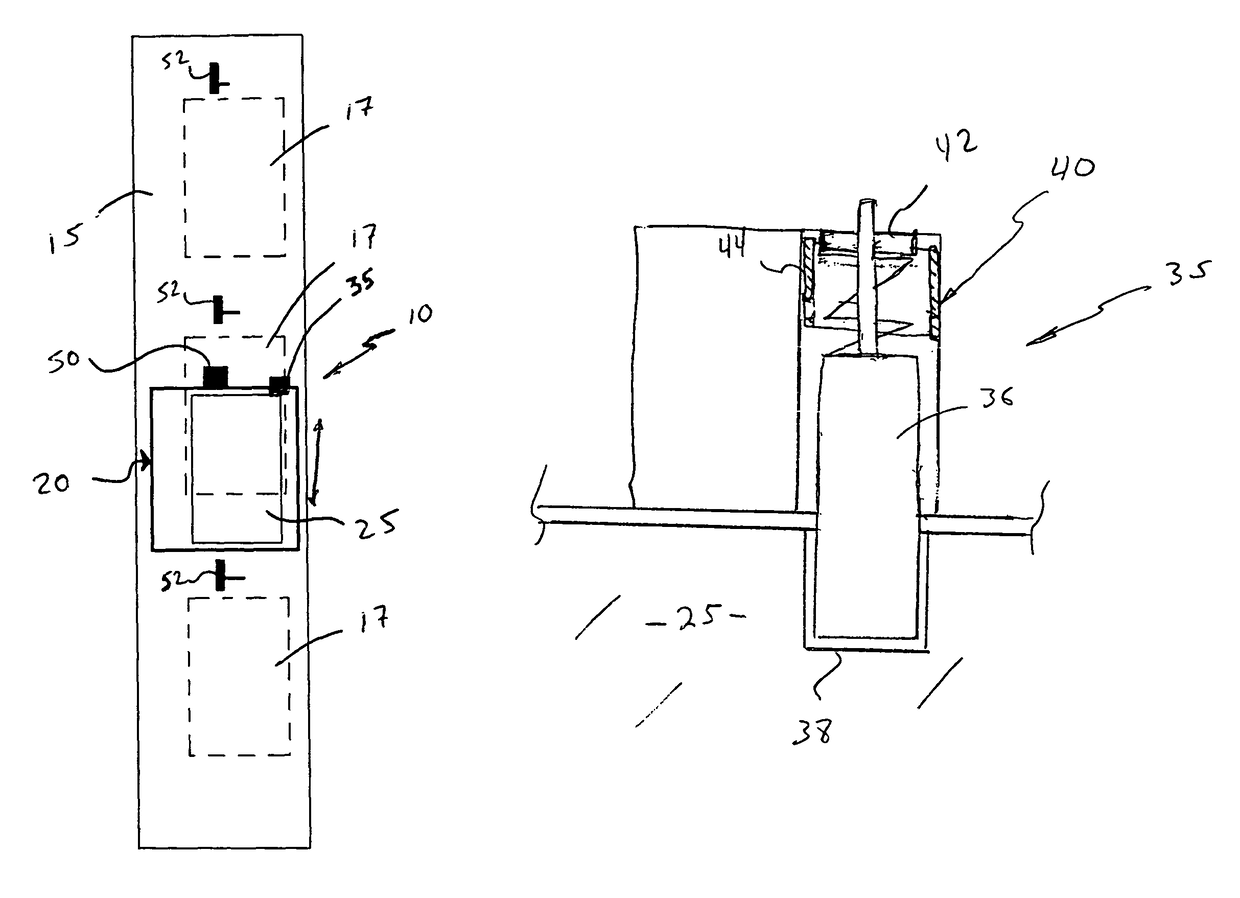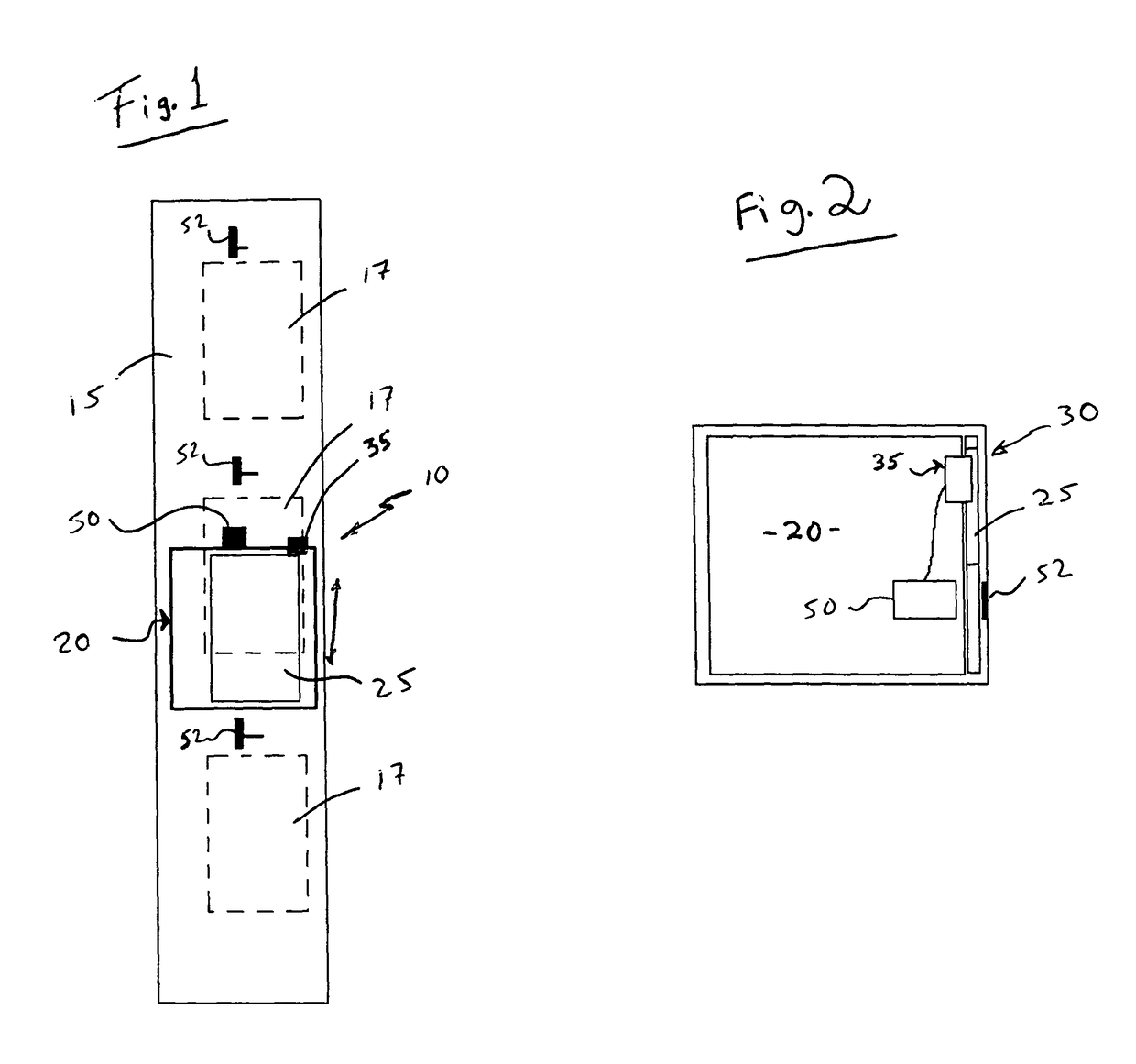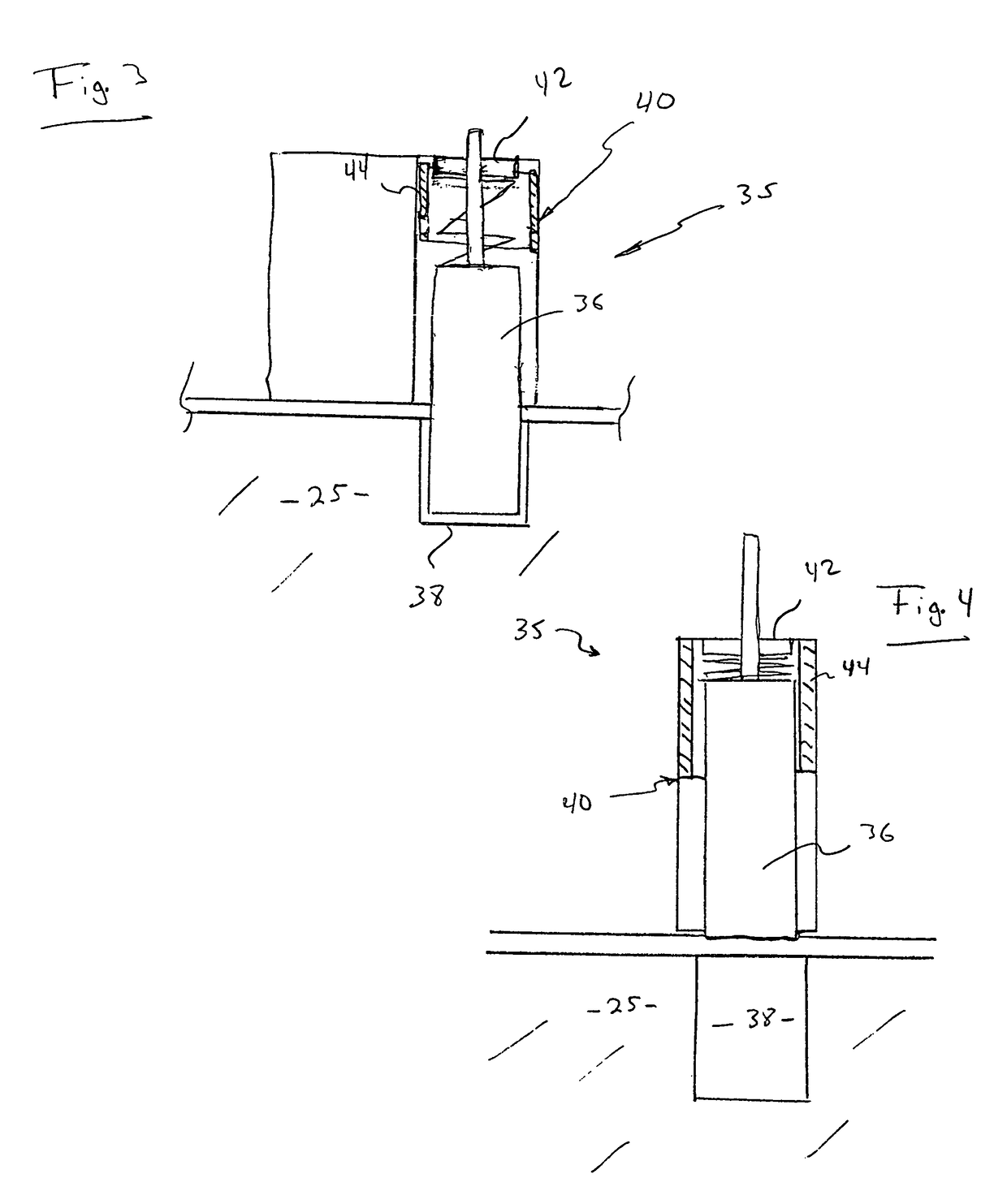Elevator door safety lock system
a technology for safety locks and elevators, applied in elevators, transportation and packaging, building lifts, etc., can solve problems such as lock mechanisms, potential for significant malfunction, and substantial hazards
- Summary
- Abstract
- Description
- Claims
- Application Information
AI Technical Summary
Benefits of technology
Problems solved by technology
Method used
Image
Examples
Embodiment Construction
[0026]Shown throughout the figures, the present invention is directed to a safer and more secure elevator system, generally indicated as 10, and more particularly to an elevator door safety lock system, generally 30, which provides for that increased safety and security by ensuring that the elevator door 25 remains closed and / or locked when appropriate, even under certain unusual circumstances including power failures and / or interruptions. In this regard, the elevator system 10 of the present invention preferably includes an elevator shaft 15 and at least one elevator car 20. The elevator car 20 is structured to move within the shaft 15 between a plurality of floor openings 17 defined in the shaft 15. As a result, passengers or other materials may get on the elevator 20 and can appropriately ride to a desired floor opening 17, at which point they can exit the elevator 20. Along these lines, each elevator 20 preferably includes an elevator door 25 structured to maintain the elevator ...
PUM
 Login to View More
Login to View More Abstract
Description
Claims
Application Information
 Login to View More
Login to View More - R&D
- Intellectual Property
- Life Sciences
- Materials
- Tech Scout
- Unparalleled Data Quality
- Higher Quality Content
- 60% Fewer Hallucinations
Browse by: Latest US Patents, China's latest patents, Technical Efficacy Thesaurus, Application Domain, Technology Topic, Popular Technical Reports.
© 2025 PatSnap. All rights reserved.Legal|Privacy policy|Modern Slavery Act Transparency Statement|Sitemap|About US| Contact US: help@patsnap.com



